The Essential Driver Behind Product Adoption and Growth
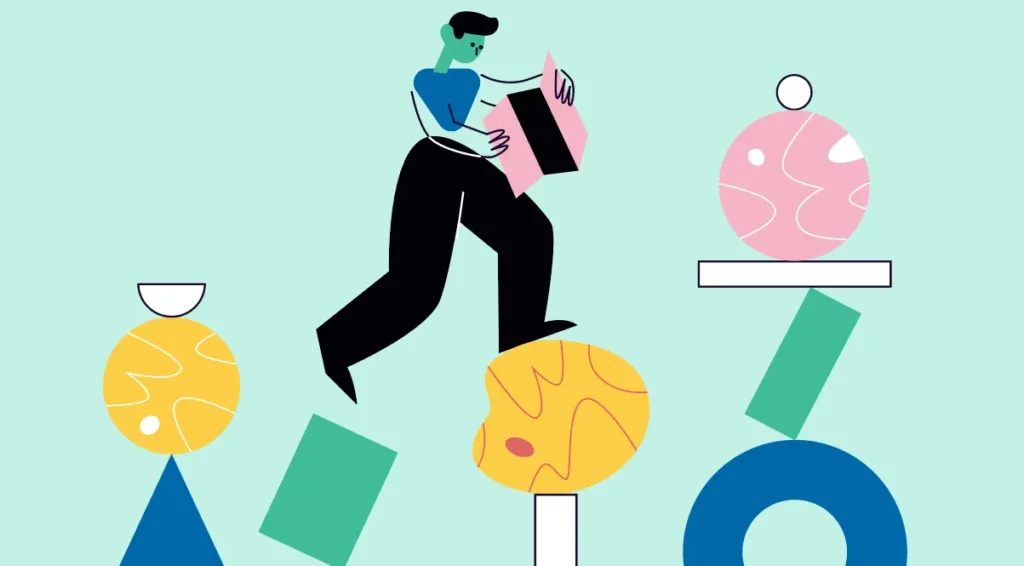
A successful SaaS business model that leads to product adoption revolves around three basic principles: Value, retention, and advocacy.
Providing customers with value is the initial trigger of product adoption. Customer retention and advocacy generate growth without forcing companies to increase customer acquisition costs (CAC) over time.
A healthy company largely relies on expansion and advocacy as the main growth channels. In terms of MRR, these channels should outperform the results of leadgen activities, especially because classic leadgen processes aren’t scalable.
As a firm, you can’t afford to keep hiring more sales reps or keep increasing your advertising budget to grow your MRR. This would lead to a staggering CAC that would delay growth. Such a conversion-based business model is not sustainable in the long run.
Jason Lemkin goes as far as to say that successful SaaS companies are those that, after reaching an ARR of approximately $1m, keep triplicating their MRR without increasing CAC.
Churn is the true archenemy of SaaS growth. We all know that.
Customers might churn even before breaking even. But say you manage to balance out your CAC, nonetheless, a very low CLTV will lead to stagnation. As mentioned, retention and advocacy are the real drivers of growth and success.
Negative churn occurs when the MRR generated through renewals, upsells, and account expansion exceeds the MRR lost due to churn.
To achieve this, SaaS companies need to obviously reduce their MRR churn rate while working on increasing their CLTV and ARPA.
Table of Contents
The Obvious Link Between CX and Churn
There are several reasons why customers churn. Sometimes it’s because of expectations management, sometimes it’s due to the lack of product/use case fit. Sometimes the loss of a key user leads to account churn, and sometimes it’s just about budget, internal strategic changes, stage of growth…
Regardless of why customers churn, it’s definitely not surprising to hear that a bad customer experience (CX) is often the main reason why customers switch to a competitor.
A single incident along the customer journey may not cause a customer to churn, but when problems pile up and happen in different areas, such as in product or in customer support, your customer is more than likely to churn.
The link between CX and churn is evident and self-explanatory.
We therefore decided to investigate the link between UX and retention by studying and analyzing the product adoption journey.
The Link Between UX and Retention in The Product Adoption Journey
Our product is designed to enhance the UX with interactive on-screen guidance, onboarding tours, proactive contextual support, and automated process walkthroughs.
The initial positive effects of guidance are easy to spot right from the get-go: Higher engagement, lower time-to-value, and higher trial-to-paid conversion.
Companies that care about the success of their customers implement Userlane to segment users and create personalized customer journeys that lead customers to achieve all their goals in no time.
The opportunity to scale high-touch processes with automation allows companies to create sustainable onboarding and support operations without adding costs while simultaneously saving support costs thanks to the reduced number of product-related tickets.
And our recent case studies clearly prove that this is true.
However, we often advocate that user guidance also has a positive long-term effect connected to higher retention rate.
Basically, we’re convinced that UX is actually one of the main drivers of growth, success, and retention.
To verify the impact of UX on product adoption and growth, we decided to collect data regarding the perceived in-product experience and the impact of such experience on the product adoption journey of over 800 SaaS end-users.
We asked them to report on an example of great UX and bad UX and the effects on their relationship with the product and brand at different stages.
We only focused on in-app UX by asking targeted questions about users’ positive or negative feelings at different stages of the product discovery and adoption journey and by investigating the relationship they developed with the product and brand.
The complete study will soon be published, but in the meantime, here’s a list of the most important findings that undeniably link UX to retention and product adoption.
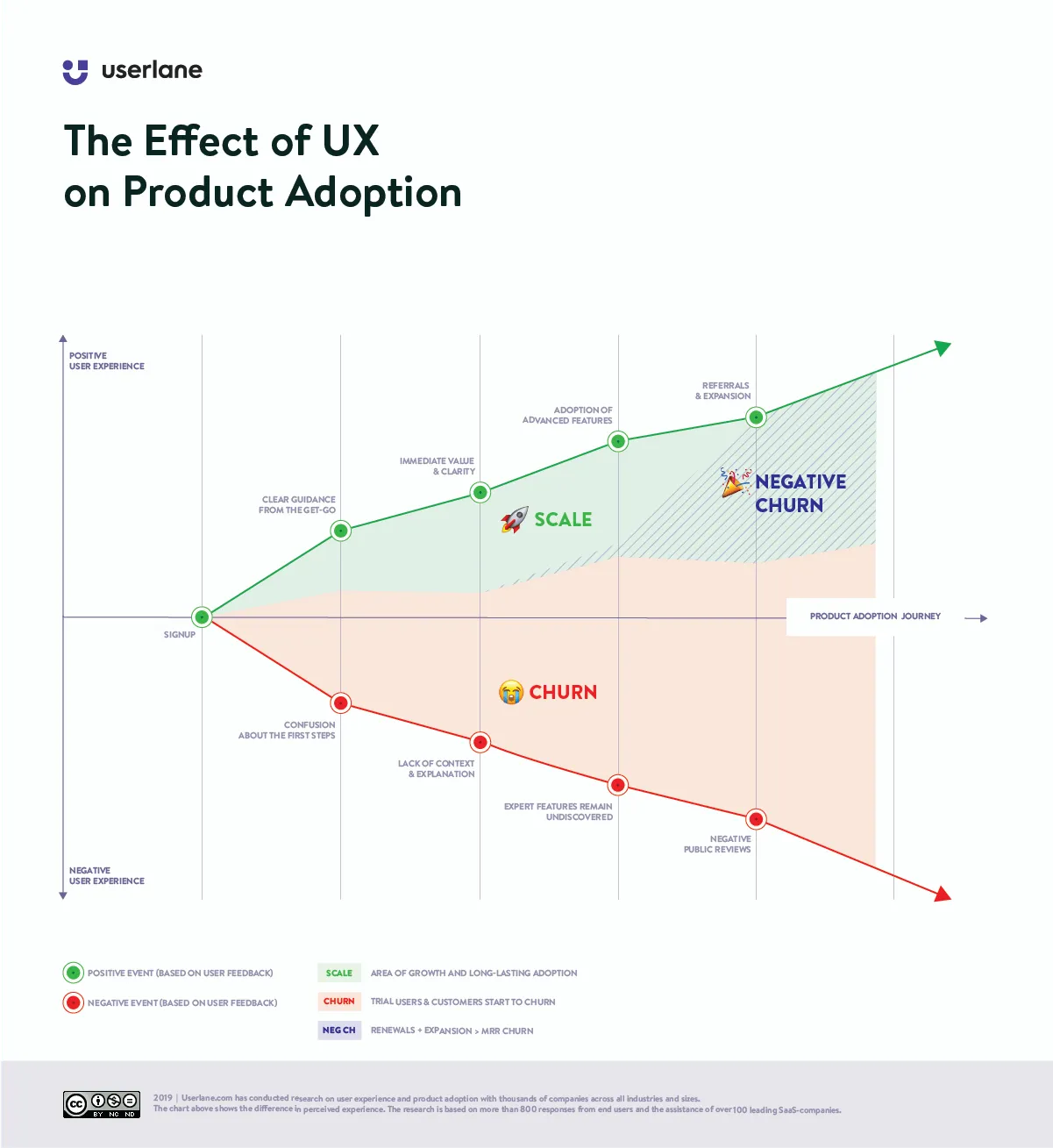
Let’s go through the different stages of the product adoption journey one by one to see how UX impacts growth and retention.
Initial Customer Onboarding Phases and Product Discovery
After signing up, in-product customer onboarding begins.
This is a critical phase because, as we often mention, this is when you set the mood for the entire relationship with the customer.
This stage is not only connected to immediate churn linked to the lack of desired outcome. Problems during the onboarding phase can also lead to long-term churn since customers who experience issues at this very initial stage tend to be less forgiving over time when other problems occur.
This is the first time your customers interact with your product, and basically, your only chance to make a very good first impression.
Onboarding your customers involves achieving several different goals quickly and allowing users to go from zero to hero in no time.
Understanding what your product can do and how to achieve goals is the first milestone in the journey that should occur right after sign up.
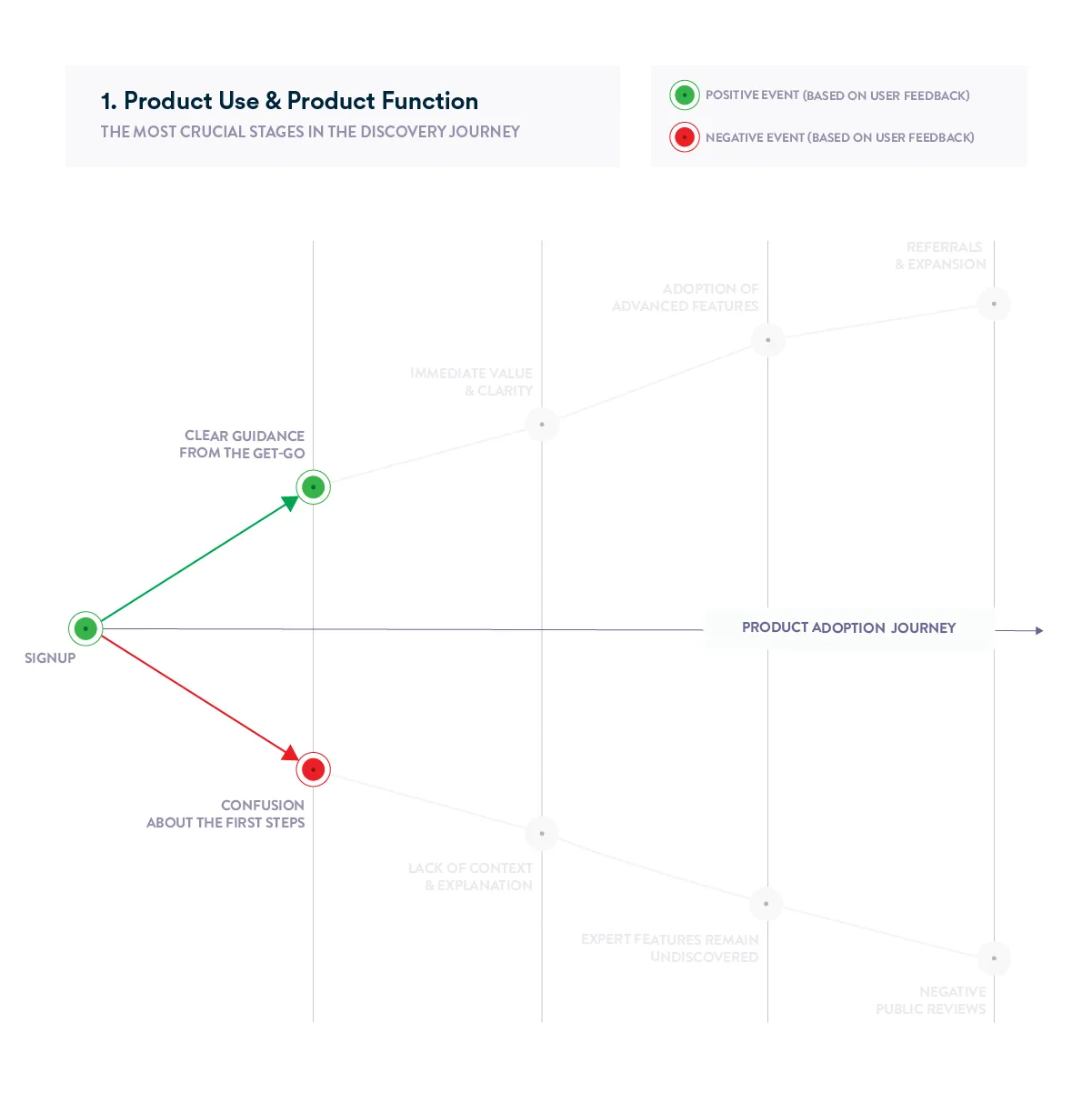
Users who don’t clearly understand the purpose of your solution or its value proposition, or users who feel confused on what to do next experience frustration and soon lose their interest in exploring your software.
During the product exploration phase, users need to be guided through proper checklists. They need to discover what they can achieve and how they can do so in steps while actually being productive.
Any delay in the interaction with your software or dead-end path along the way generates a permanent bad impression.
Time is precious. Users invest their time in exploring your solution and its capabilities. They expect the journey to be smooth and rewarding.
A smooth UX leads to high engagement and action. Users are motivated to continue their discovery journey because they know how to proceed and they receive specific prompts that trigger new actions.
The whole onboarding journey needs to be fluid and organic.
For you, this means active trial users who realize the value of your solution and who are more likely to understand and accept your pricing based on the opportunities they spot, which are connected to your product functionality.
Product Success and Time-to-Value for Product Adoption
After seeing the value of a SaaS product, users soon become impatient and want a slice of that cake you showcased so perfectly during the initial discovery phase.
Time-to-value is a critical element in the product adoption journey.
If customers feel that they have to work hard to get to some quick wins or if you delay quick wins with irrelevant information, their mood suddenly changes.
Once you set specific expectations, it’s time for users to be successful.
In order to achieve that, you need to:
- Understand your users, segment them, and lead them to their desired outcome
- Provide contextual help based on customer profile, behavior, and intentions
- Trigger immediate action in your platform without forcing users to access information elsewhere
- Show users how easily and quickly they can perform basic tasks and achieve their goals
- Push users to continue their discovery journey
- Trigger feature adoption (again based on profile and intent)
Users often report that they feel overwhelmed with useless information or that they lack the context to actually interpret the information they receive. Other times, they completely lack the information they need to proceed.
Such a poor UX at this point automatically reduces motivation and engagement, and users are more likely to feel disconnected from the brand.
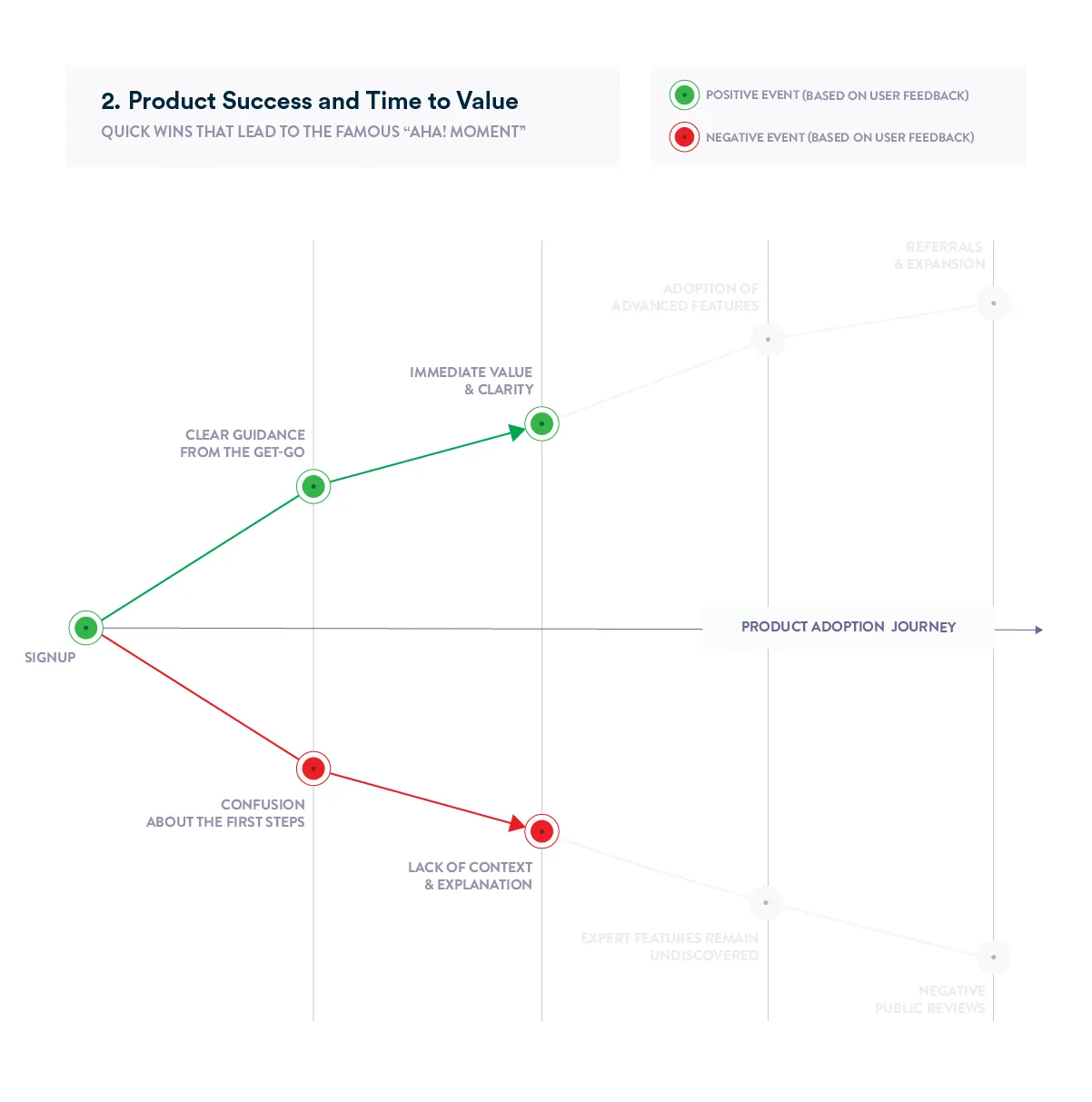
Loyalty and trust grow over time, but users need to feel that you care.
A great product is not enough. Sometimes users report that they use specific products because they’re stuck in a long-term contract or because they didn’t have time to look for a better option.
Oftentimes, users are satisfied with the results they achieve with a specific software solution, but they mention that they don’t feel supported by the brand and that they don’t enjoy working with that specific solution.
A bad UX creates inactive and zombie users or users who are very likely to churn as soon as they’re presented with a better solution with low switching costs.
An outstanding in-product experience, on the other hand, leads to brand loyalty and retention. But to achieve that, companies need to create personalized customer journeys that lead to success and embed them directly within their products.
The Key to Product Adoption: Engagement and User Activation
Key feature adoption leads to immediate results. A good UX flow leverages this high-endorphine state to push users to product adoption.
This means making sure that through scaffolding, users get access to advanced features, integrate your solution deeply in their business routine, and become experts.
But why is this connected to retention?
Users tend to use, on average, approximately 40% of the features of complex SaaS applications (based on a case study conducted by Userlane on enterprise users).
Customers that only scratch the surface of what your product can do will lose interest in your application over time. Their ROI will be harder to justify, and once you lose a key user, you might end up losing the entire account.
Your mission, at this stage, is to turn every user into an expert who can master every aspect of your application.
People we interviewed also mentioned that if they notice that they don’t see the benefit in using advanced features, they’re more likely to switch to a ‘lighter’ version or simply downgrade their subscription plan.
The consequence: Upselling becomes harder (or even impossible) and customers are likely to churn.
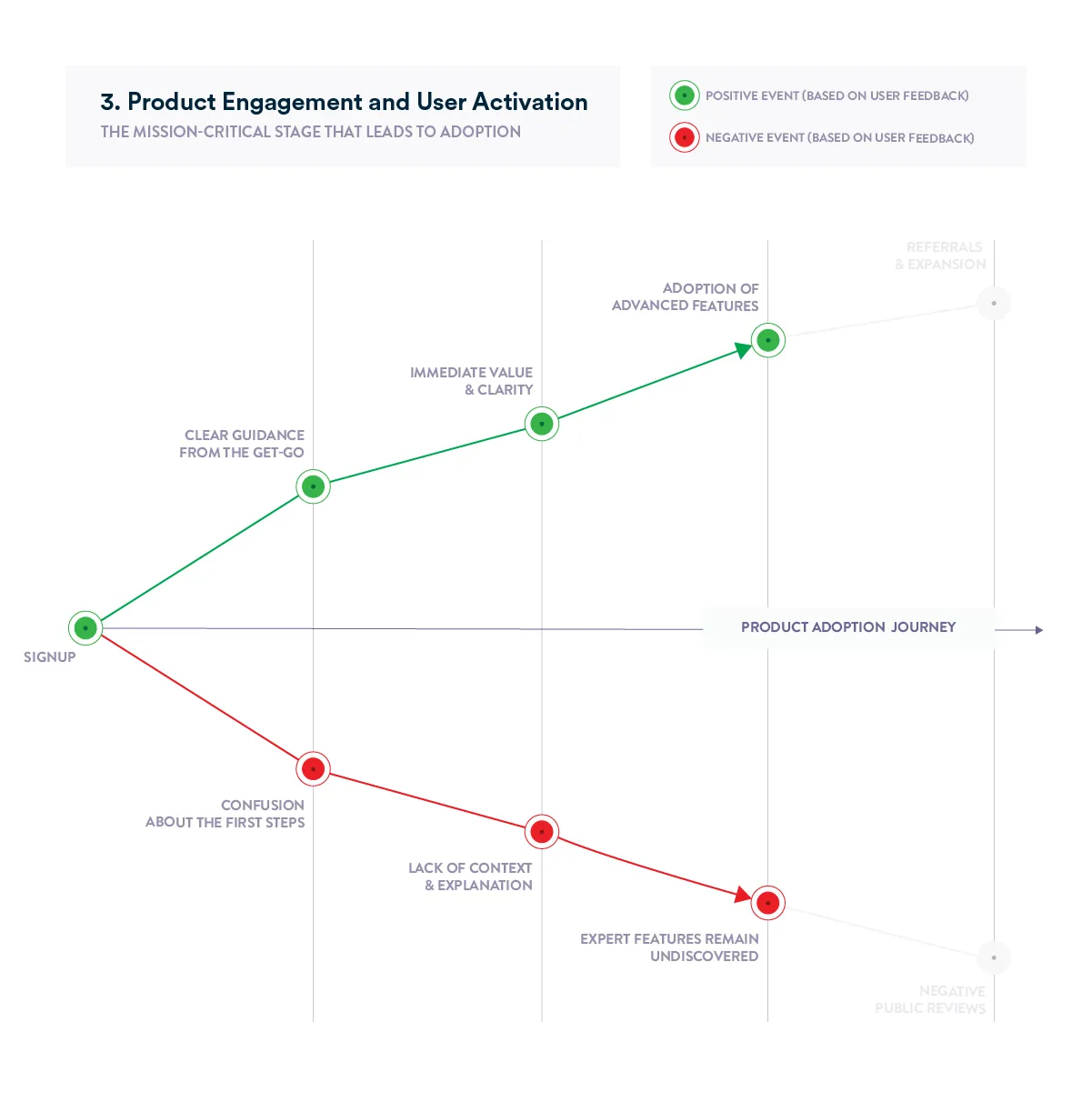
Expert users are fully hooked, see the full potential of your solution, achieve more goals, and tend to go back to your application more often.
Additionally, guiding users through advanced features is linked to increased adoption. Accounts tend to implement your software for multiple use cases and integrate it even more deeply within their business infrastructure.
Product experts are highly committed and in for the long run. Your UX needs to facilitate advanced feature adoption, integrations, and continuous exploration and customer education.
Product Adoption, Success, and Growth
Loyal customers, who quickly become experts, feel supported and achieve all their goals. These are the types of customers who are happy to renew their subscription, learn more about other services and solutions you offer, review your product, and refer it to other potential customers.
A bad UX creates frustrated customers who might experience lukewarm feelings or even become hostile towards your brand.
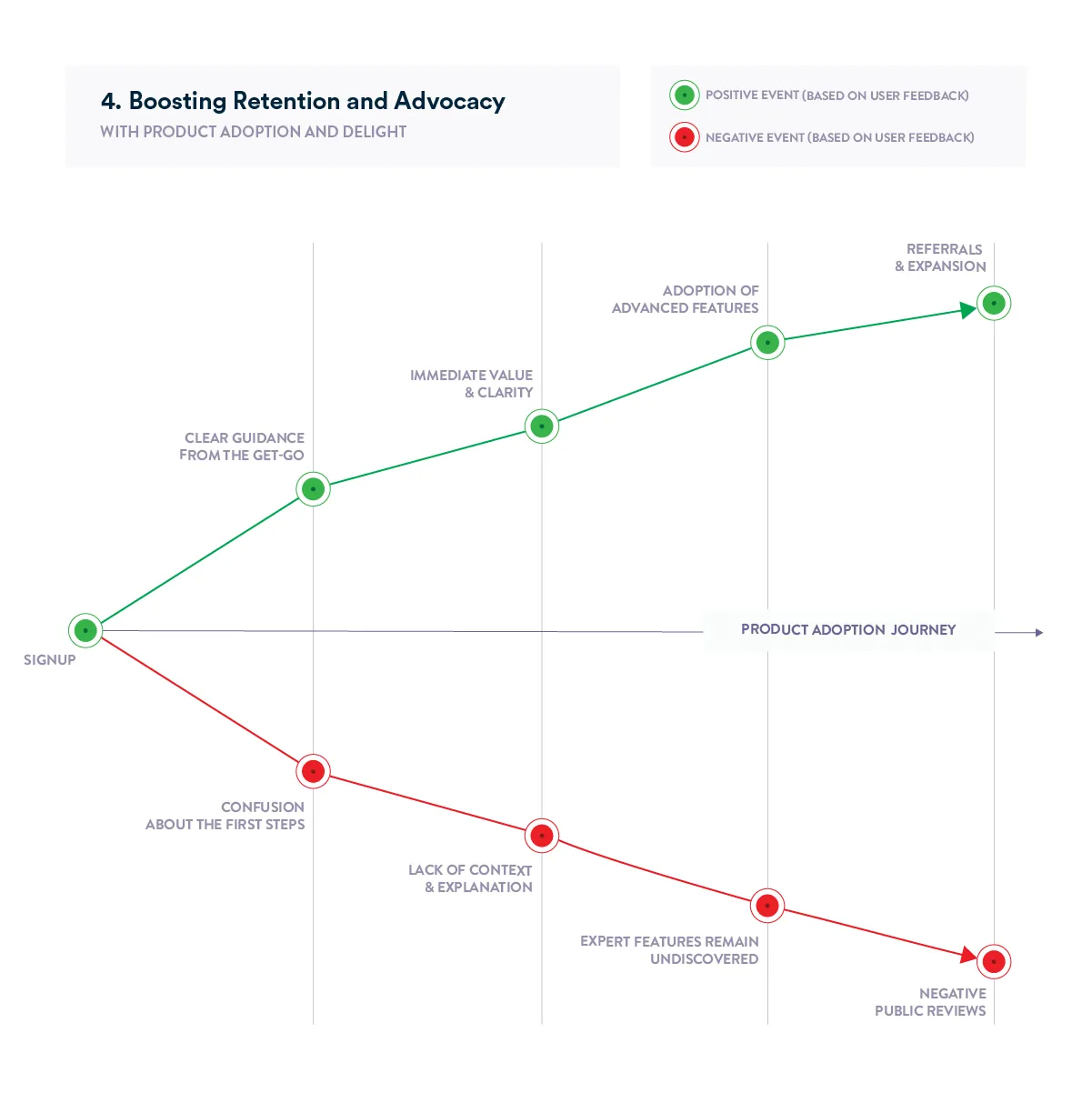
A great in-product UX reduces the risk of immediate and long-term churn. It creates a solid bond between a user and the brand.
The effects on the bottom line are clear:
- Higher trial-to-paid conversion
- Lower logo and MRR churn
- Higher CLTV
- Higher upsell potential
- Higher referral rate
- Lower CAC (diluted by referrals, upsells, and account expansion)
- A healthy, sustainable, and organic business model
Also, your UX might not be the only prerequisite for growth and negative churn: the whole customer experience contributes to such results.
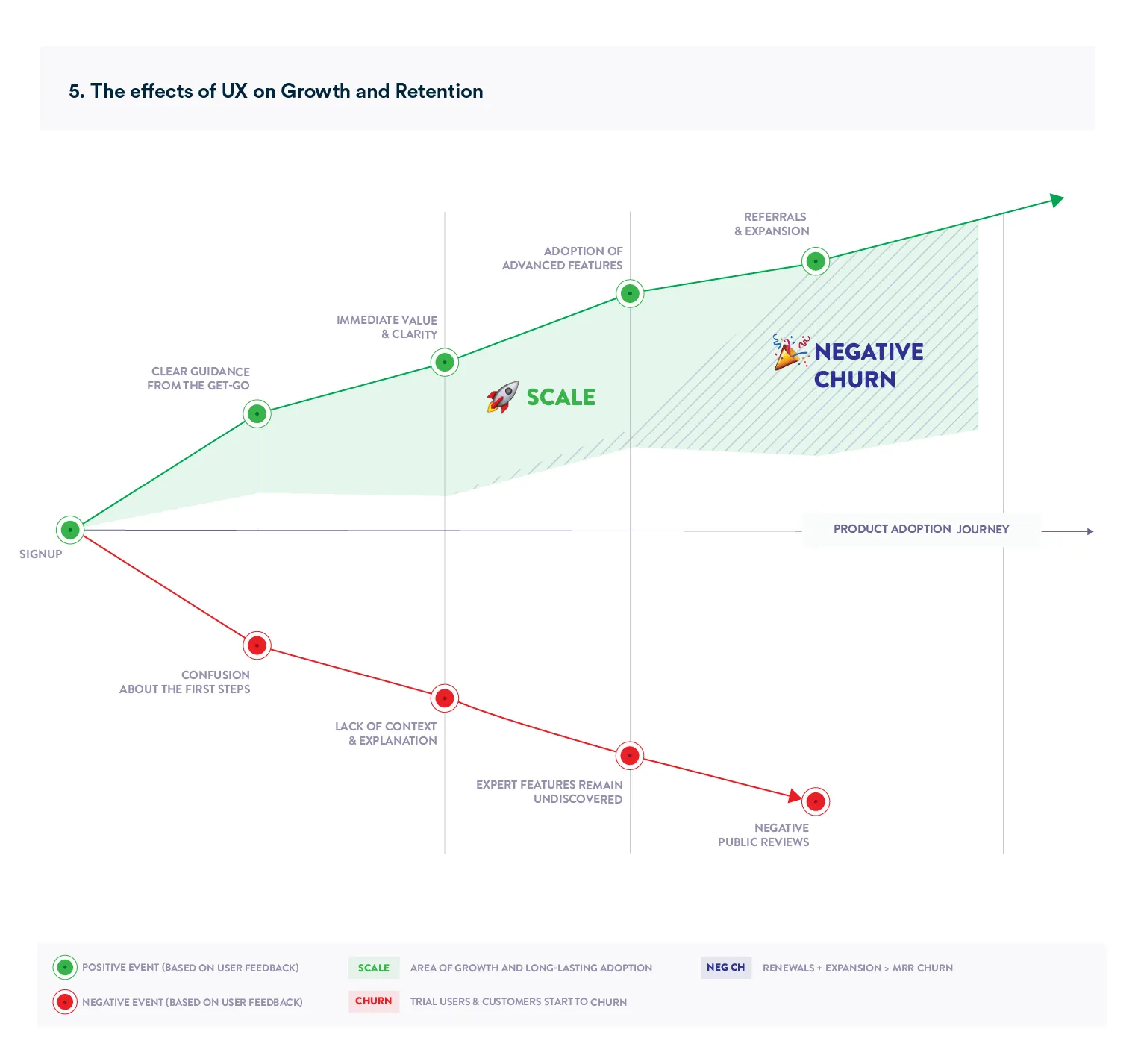
However, a bad UX alone definitely reduces your odds of growing organically.
Low trial-to-paid conversion, high churn, low CLTV, and low customer advocacy will lead to a purely paid acquisition-based business model that is simply not scalable.
Over time, a bad UX leads to stagnation, impossibly high costs for new MRR until saturation, and, ultimately, failure.
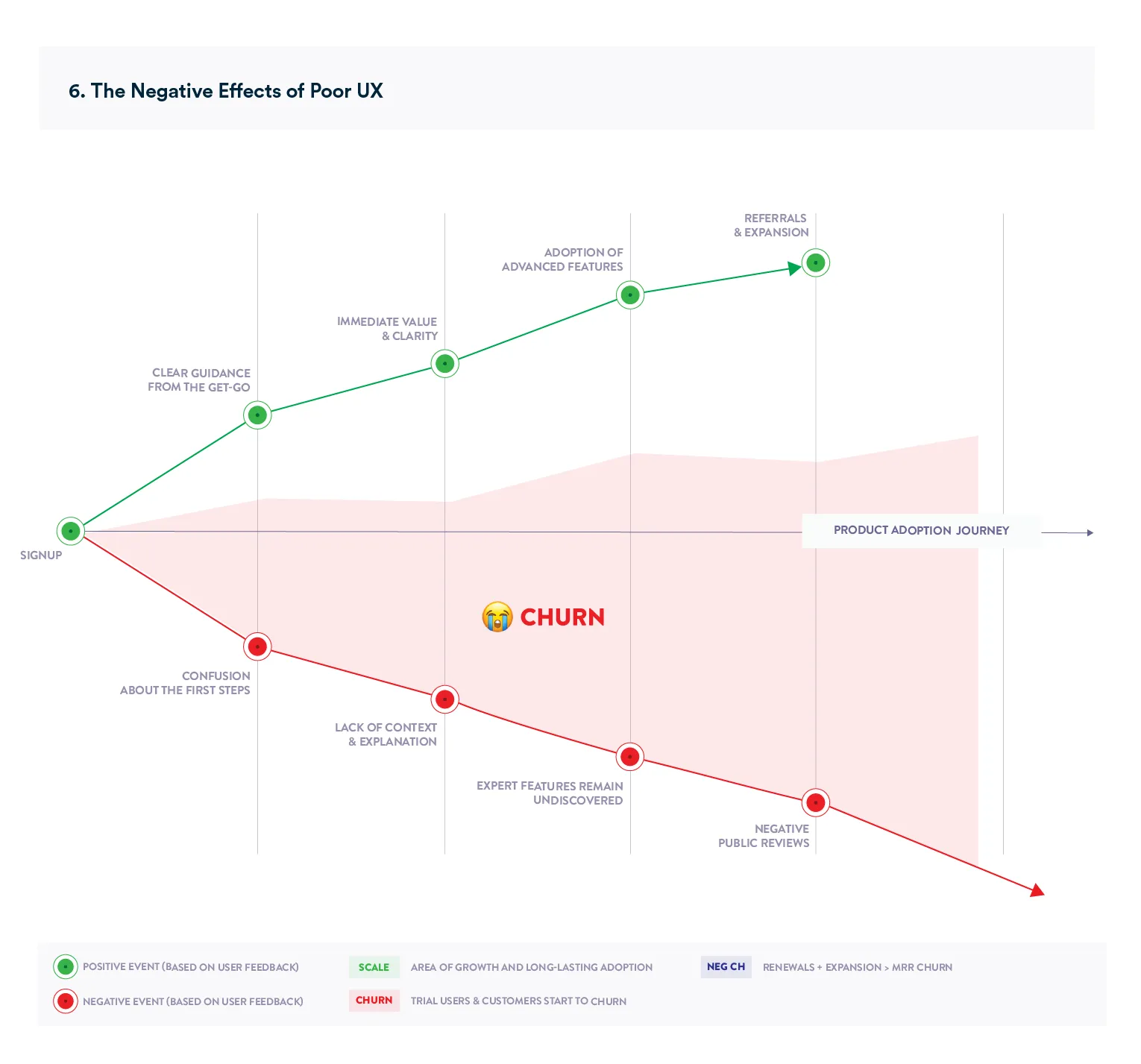
Even though it’s impossible to get rid of customer churn altogether, a positive UX is the key to reducing it and mitigating its effects with organic growth.
Think of the applications you would never do without and you’re a fan of. What do they have in common?
An outstanding user experience!
The Role of Userlane in the Product Adoption Journey
Userlane is a guidance layer that goes on top of other software applications to provide users with onboarding tours, interactive walkthroughs for processes, and contextual step-by-step on-screen support.
We developed our solution to enable software vendors to provide the most organic and personalized UX to lead end-users to success.
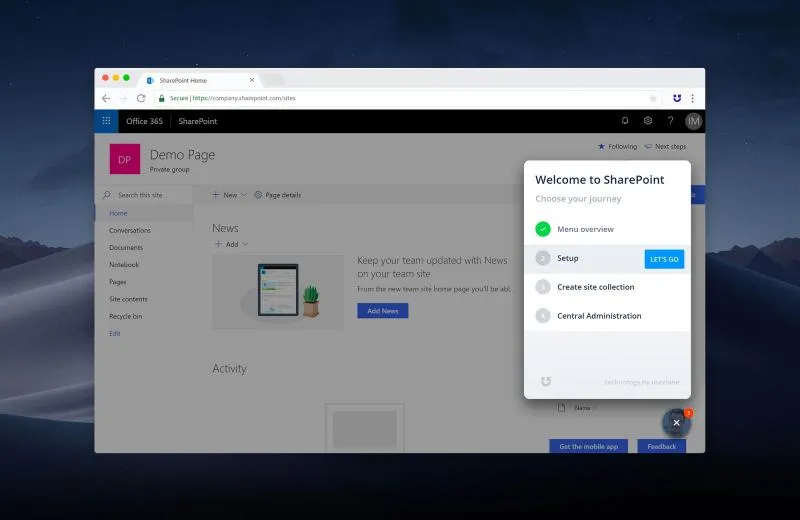
The effect?
We checked the effects of interactive guidance on the UX by talking to users who used Userlane in their product adoption journey.
Whereas the median of the results in terms of UX was below average, users that were steered through processes in real time with Userlane experienced, on average, a much more positive user experience.
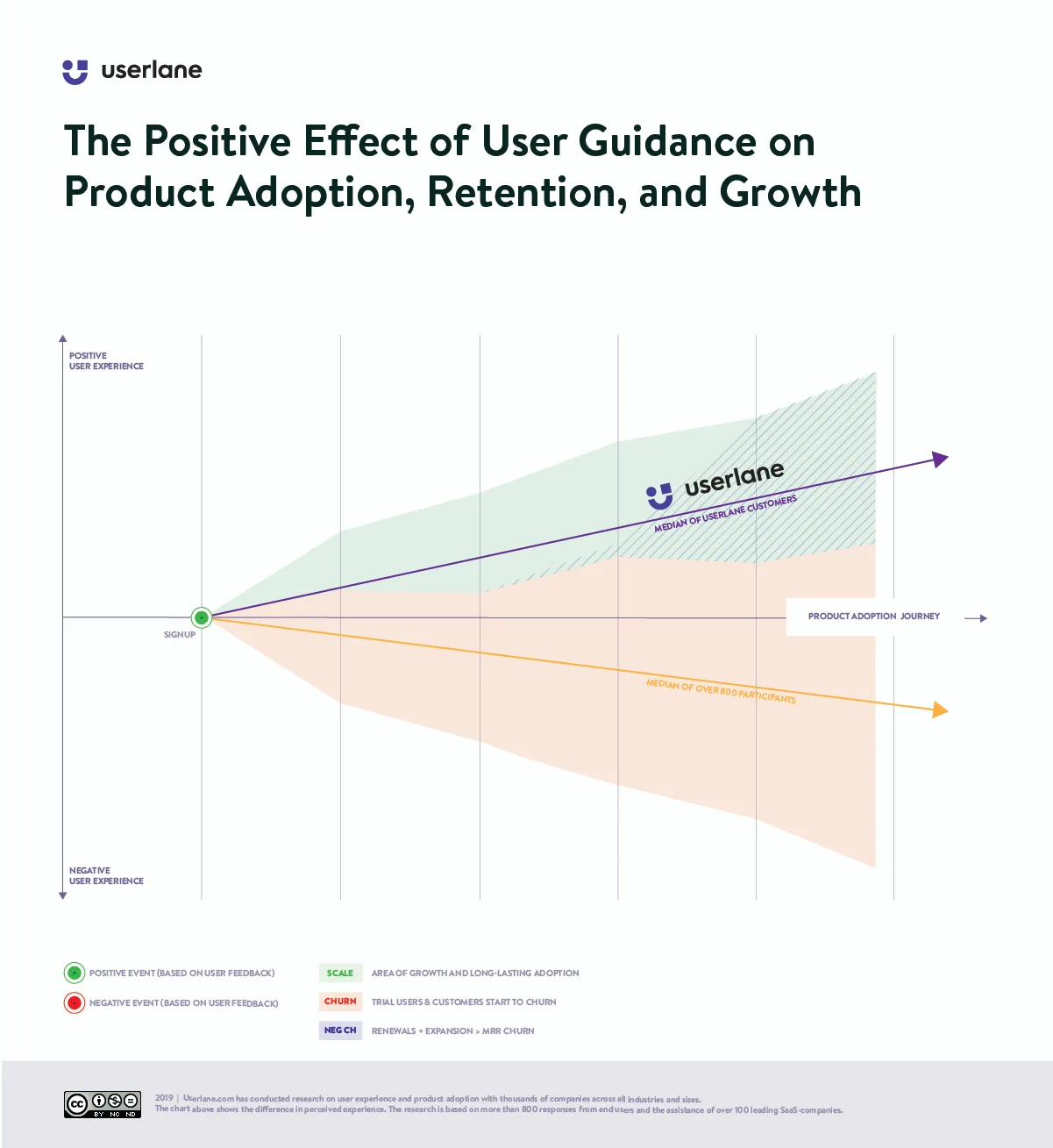
User guidance dramatically impacts the perceived UX of software users.
Userlane achieves this by creating a truly interactive experience. Unlike tooltips and other on-screen solutions, Userlane doesn’t just present elements in the UI or suggests what to do next with simple on-screen pop ups.
Userlane takes full control of what happens in software applications, automatically prevents procedural mistakes, and forces specific actions that lead users to achieve their goals based on their profile and intent.
Basically, users receive personalized guidance whenever they need it most, and Userlane takes each user by the hand and transforms each and every one of them into an expert who can fully master every task in your application.
Userlane removes uncertainty and delays while intelligently acting on behalf of the users with every possible interaction with the elements in the UI instead of simply suggesting what to do next.
A great UX is the key to product adoption and success. And Userlane is a powerful ally that allows you to check all the boxes in the checklist of a perfect UX.
Do you want to know more about Userlane? Try Userlane for free for two weeks .

